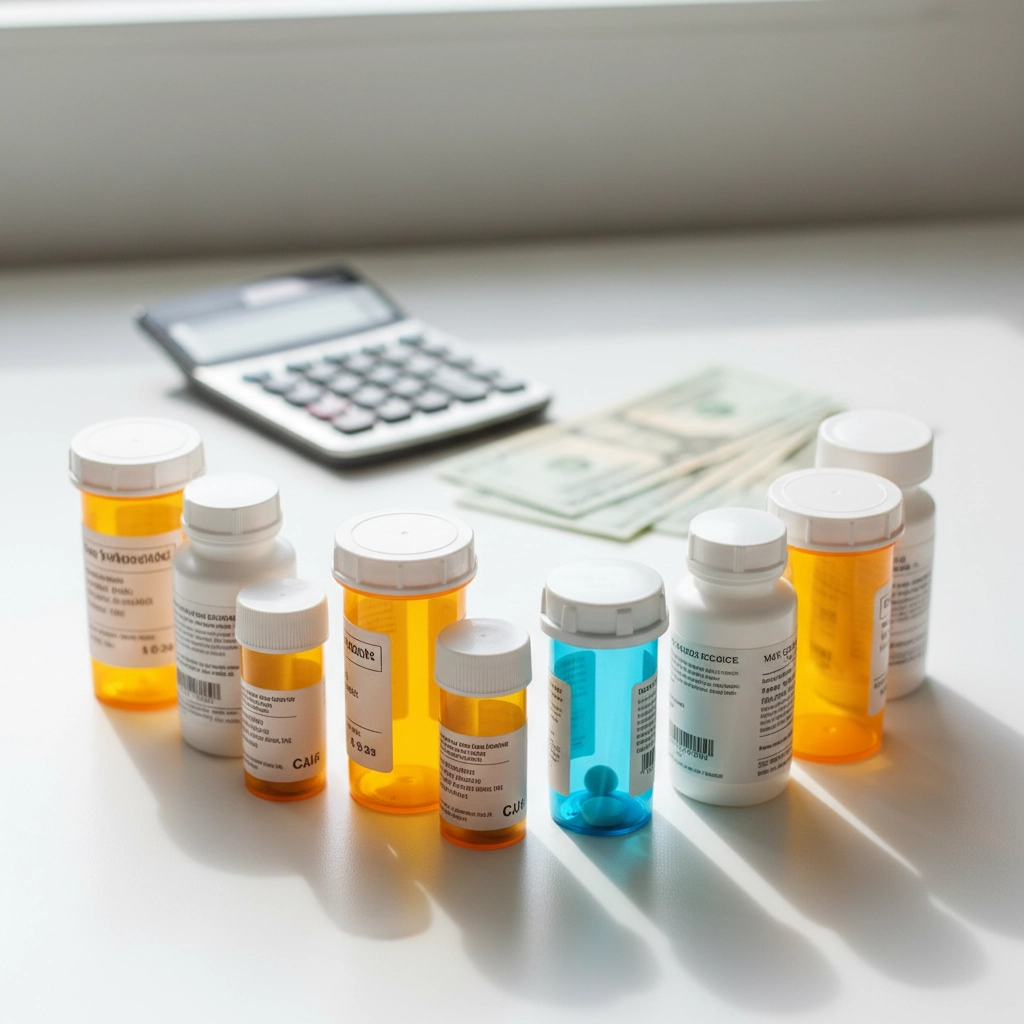Medicare 2025 Secrets Revealed: What Experts Don't Want You to Know About the $2,000 Cap
- Admin
- Sep 15
- 5 min read
The Medicare landscape is changing dramatically in 2025, and the biggest news isn't exactly a secret: it's the new $2,000 out-of-pocket cap for prescription drugs. But here's what many people don't realize: the devil is in the details, and understanding those details could save you hundreds or even thousands of dollars this year.
If you're approaching Medicare age or already enrolled, this change affects you directly. Let's break down what this cap really means for your wallet and your health, without the confusing insurance jargon that usually comes with these announcements.
What Exactly Is This $2,000 Cap?
Starting January 1, 2025, Medicare Part D prescription drug plans now have a hard limit on what you'll pay out-of-pocket for covered medications: $2,000 per calendar year. This applies whether you have a standalone Part D plan or get your drug coverage through a Medicare Advantage plan.
Here's the important part: this cap is automatic. You don't need to enroll in anything special or fill out extra paperwork. Your health plan tracks your out-of-pocket costs throughout the year, and once you hit $2,000, you're done paying for covered prescriptions for the rest of that year.

This represents the first time in Medicare's history that beneficiaries have had a firm limit on prescription drug spending. Before 2025, some people with expensive medications could face thousands of dollars in out-of-pocket costs with no ceiling in sight.
Who Benefits Most From This Change?
The numbers tell a compelling story. Approximately 11 million Medicare beneficiaries are projected to reach this $2,000 cap in 2025, with average savings of $600 per year. But if you don't qualify for Extra Help (the low-income subsidy program), your savings could be much higher: averaging around $1,100 annually.
The biggest winners are people managing expensive chronic conditions. For example:
Individuals with cystic fibrosis who don't receive Extra Help are projected to save approximately $6,700 annually
Those with immune disorders, organ transplants, and certain cancers will also see substantial reductions in their prescription costs
Ask yourself: are you currently spending more than $2,000 per year on prescription medications? If so, this change could significantly impact your household budget and retirement planning.
What Counts Toward Your $2,000 Cap
Understanding what expenses count toward your cap is crucial for planning your healthcare budget. The cap includes:
Deductibles for covered medications
Copayments for prescription drugs
Coinsurance amounts you pay
All prescription medications covered by your Part D plan, including specialty medications
The cap applies regardless of your income level, and it covers all the prescription drugs on your plan's formulary (the list of covered medications).

Critical Exclusions You Need to Know
Here's where many people get confused, and it's important to understand these limitations before you assume all your medication costs are capped at $2,000.
Medical vs. Prescription Coverage: The cap doesn't include drugs covered under Medicare Part B. This distinction matters because Part B covers injectables and infused medications administered at doctor's offices, hospitals, or outpatient facilities. These costs operate under separate rules and aren't subject to the $2,000 cap.
What's Not Covered: The cap excludes several types of expenses that catch people off guard:
Over-the-counter medications
Drugs purchased outside the United States
Medications obtained through discount services like GoodRx
Your monthly Part D plan premiums
Drugs not on your plan's formulary (unless you get an exception approved)
Be sure to review your current medication list with these exclusions in mind. You might discover that some of your routine expenses won't benefit from the new cap.
How Third-Party Assistance Affects Your Cap
Starting in 2025, certain third-party payments now count toward your $2,000 cap calculation. This includes assistance from charitable organizations, manufacturer discount programs, and enhanced supplemental benefits offered by some Part D plans.
This change could mean you reach your cap sooner than expected if you're receiving help from these sources. While this is generally good news for your wallet, it's worth understanding how these programs interact with your Medicare coverage.
Planning for Future Changes
The $2,000 cap isn't set in stone. Beginning in 2026, it will increase to $2,100, with annual adjustments based on Part D cost increases thereafter. This indexing ensures the cap keeps pace with prescription drug cost inflation, but it also means your out-of-pocket maximum will gradually increase over time.
When planning your retirement healthcare budget, factor in these future adjustments. What seems like a fixed cost today will evolve as you age and potentially need more prescription medications.

Strategic Considerations for Your Medicare Plan
This cap makes shopping during Medicare's annual open enrollment period more critical than ever. With such significant changes to cost structures, a different plan might better suit your individual health and financial needs.
Consider these factors when evaluating your options:
Formulary Coverage: Make sure your medications are on your plan's covered drug list
Pharmacy Networks: Confirm your preferred pharmacy accepts your plan
Monthly Premiums: Balance lower premiums against potential out-of-pocket costs
Coverage Gaps: Understand what happens if you need a medication not on your formulary
If you're managing multiple chronic conditions or take expensive specialty medications, the $2,000 cap could make a higher-premium plan with better coverage more cost-effective overall.
What This Means for Your Retirement Budget
For many retirees, prescription drug costs represent one of the most unpredictable expenses in their budget. The $2,000 cap provides much-needed certainty, allowing you to plan more confidently for your healthcare expenses.
This is your future at stake: having a firm limit on prescription costs can free up resources for other retirement priorities or provide a financial cushion for unexpected health issues. Consider how this change might affect your overall retirement strategy and whether you should adjust your healthcare savings accordingly.

Making the Most of Your Medicare Coverage
The key to maximizing these new benefits lies in understanding your specific situation and making informed decisions about your coverage. This isn't just about the $2,000 cap: it's about ensuring your entire Medicare strategy aligns with your health needs and financial goals.
Medicare rules can be complex, and small misunderstandings can prove costly over time. The interaction between Part A, Part B, Part D, and supplemental coverage creates numerous decision points that affect both your health outcomes and your financial security.
Take Action: Get Personalized Guidance
While the $2,000 cap provides welcome relief for many Medicare beneficiaries, your individual circumstances determine how much you'll actually save and which strategies make sense for your situation. Generic advice can only take you so far when dealing with healthcare decisions that will affect you for years to come.
The Medicare landscape continues to evolve, and staying informed about these changes requires ongoing attention. Rather than trying to navigate these complexities alone, consider working with someone who specializes in Medicare planning and can provide personalized guidance based on your unique needs.
Don't leave your Medicare decisions to chance. Book a Personalized Medicare Review with one of our specialists by calling 727-623-4645. We'll help you understand exactly how the new $2,000 cap affects your situation and ensure your Medicare coverage aligns with both your health needs and your retirement budget.
Your Medicare decisions today shape your healthcare costs for years to come. Make sure you're making informed choices with expert guidance tailored to your specific circumstances.





Comments